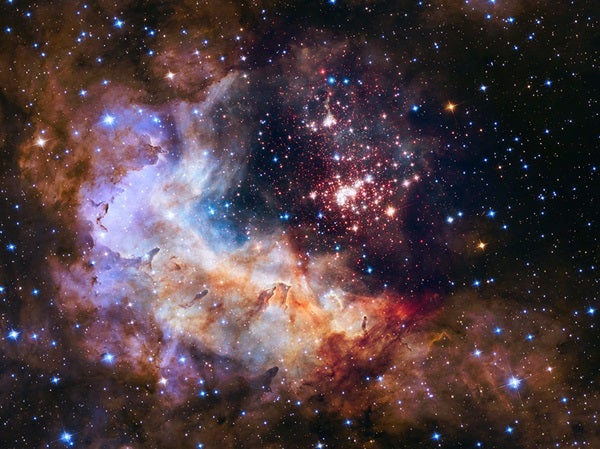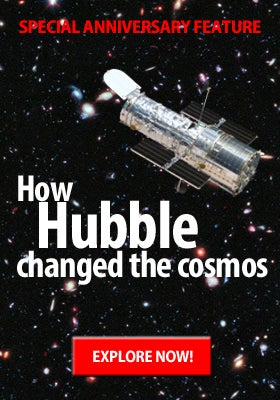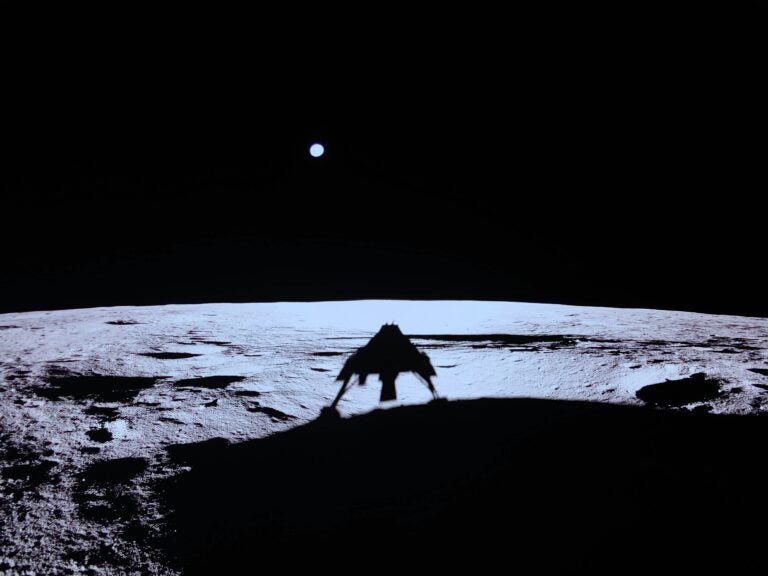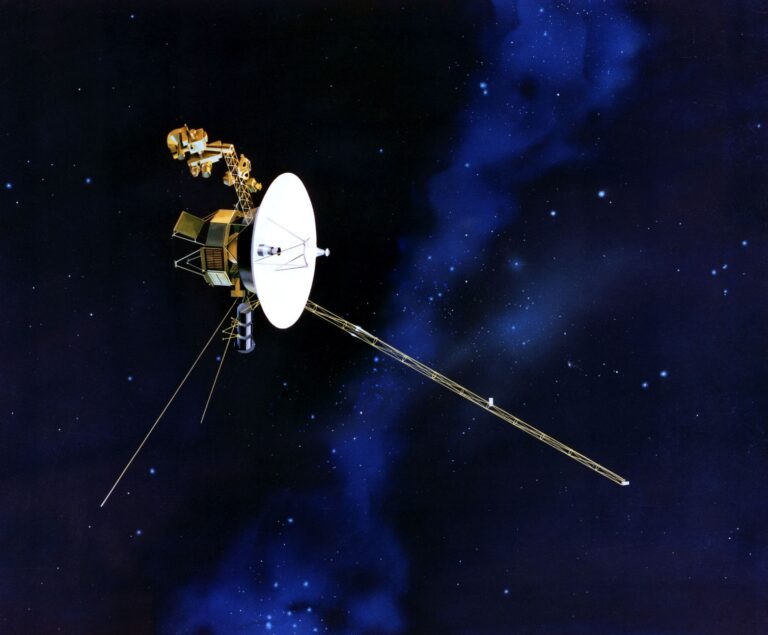“Hubble has completely transformed our view of the universe,” said John Grunsfeld of NASA’s Science Mission Directorate. “This vista of starry fireworks and glowing gas is a fitting image for our celebration of 25 years of amazing Hubble science.”
The sparkling centerpiece of Hubble’s silver anniversary fireworks is a giant cluster of about 3,000 stars called Westerlund 2, named for Swedish astronomer Bengt Westerlund, who discovered the grouping in the 1960s. The cluster resides in a raucous stellar breeding ground known as Gum 29, located 20,000 light-years from Earth in the constellation Carina.
To capture this image, Hubble’s Wide Field Camera 3 pierced through the dusty veil shrouding the stellar nursery in near-infrared light, giving astronomers a clear view of the nebula and the dense concentration of stars in the central cluster. The cluster measures between 6 and 13 light-years across.
The giant star cluster is only about 2 million years old and contains some of our galaxy’s hottest, brightest, and most massive stars. Some of its heftiest stars unleash torrents of ultraviolet light and hurricane-force winds of charged particles that etch at the enveloping hydrogen gas cloud.
The brilliant stars sculpt the gaseous terrain of the nebula and help create a successive generation of baby stars. When the stellar winds hit dense walls of gas, the shockwaves may spark a new torrent of star birth along the wall of the cavity. The red dots scattered throughout the landscape are a rich population of newly forming stars still wrapped in their gas-and-dust cocoons. These tiny, faint stars are between 1 million and 2 million years old — relatively young stars — that have not yet ignited the hydrogen in their cores. The brilliant blue stars seen throughout the image are mostly foreground stars.
Because the cluster is very young — in astronomical terms — it has not had time to disperse its stars deep into interstellar space, providing astronomers with an opportunity to gather information on how the cluster formed by studying it within its star-birthing environment.
The image’s central region, which contains the star cluster, blends visible-light data taken by Hubble’s Advanced Camera for Surveys with near-infrared exposures taken by the Wide Field Camera 3. The surrounding region is composed of visible-light observations taken by the Advanced Camera for Surveys. Shades of red represent hydrogen and bluish-green hues are predominantly oxygen.











